| Revista Umělec 1998/5 >> Art Brut - Filling the Void | Lista de todas las ediciones | ||||||||||||
|
|||||||||||||
Art Brut - Filling the VoidRevista Umělec 1998/501.05.1998 Karel Císař | museum | en cs |
|||||||||||||
|
"Perhaps none of the areas of visual arts is so tightly connected with its discoverer as art brut. After Picasso and Gaugin had completed their discovery mission in search of authentic art, Jean Debuffet set out in 1945. He intended to write a monography on authentic art, but instead of searching among the “primitive“ cultures of Africa and the Tahiti islands, he looked into Swiss psychiatric clinics and jails. Together with his friends, the writer Jean Paulhane and the painter René Auberjonois, he found a collection of psychotic drawings made by patients of the Geneva psychiatrist Charles Ladam, the first among them Aloisa and Adolf Wölfli. The latter is considered a key artist in the art brut movement.
In 1947, Debuffet founded Foyer de l’Art Brut in the basement of René Drouin’s Paris gallery. The collection began with seven discovered artists. A year later, it was moved to a pavilion rented from the Gallimard publishing house and managed by the painter Slavko Kopac. Compaigne de l’Art Brut was established to support its existence. André Breton was among the people involved in this organization. The following year, Debuffet organized an exhibition presenting 200 works by 63 artists and published a catalogue with his program text L’art brut préféré aux arts culturels. In 1951, the entire collection was moved to the US (for many reasons, including finances) and Debuffet, despite Breton’s disapproval, dismissed Compaigne de l’Art Brut. Debuffet resumed collecting in 1959, and his collection soon grew to 1,200 works. Three years later, the collection was returned to Paris and housed in a new, larger space, but was accessible to experts only. The old supporting organization was likewise re-established. In 1967, Musées des Art Decoratifs in Paris showed a major part of the already vast collection (with over 3,000 new additions) and published a comprehensive catalogue of the works. Debuffet contacted officials in the Swiss city of Lausanne the same year and arranged for the collection to be moved to Chateau de Beaulieu, which has been the home to the collection’s from 1976 until today. As any due conqueror, Debuffet, too, wanted to mark his territory. The main guidelines for the terminological definition of art brut reflected the narrow sphere of several artists he discovered during his first missions: “[The term art brut applies to] works created by people who are not affected by arts culture. In contrast to intellectuals, we find in their work almost no traces of imitation. These artists take inspiration – for their themes, choices of used materials, means of transposition, rhythm, handwriting, etc. - solely from within their own resources, as opposed to the stereotypes of classic and fashionable art. We are witnesses here to artistic performance in its pure and raw form; each of its steps is reinvented by the author who draws only on his own impulses - i.e. art that is representative of invention, as opposed to the chameleon-like adaptability and imitation so ubiquitous in cultured arts.“ This strict definition was derived from the isolated environment of the clinics and jails where Debuffet found the artists in the 1940s. The artists often ended up isolated in their early youth due to domestic problems. Their work could be thus understood as truly unaffected by artistic tradition. Debuffet’s lone source, however, was soon exhausted; the colonies were plundered. With farmacotherapy gaining in practice, the delirium and hallucinatory states that had served as the main sources of inspiration for Debuffet’s artists were increasingly suppressed in the 1950s. New psychotherapeutic methods emerged at this time, including art therapy; however, the resulting works could in no way be considered authentic art. Debuffet thus had to give up his original ideological positions and annex new territories, which he called collections annexes – these met the original criteria only partially. In 1982, three years before Debuffet died, he came up with a new title: the Neuve Invention, and allowed part of this collection to be loaned out for short-term exhibitions, thereby breaking his other principle, which stated that art brut must remain separated from cultural systems. The borders of nascent art brut now opened to include naive art more easily than ever before. Though naive artists are also self-taught artists, they consider their artifacts works of art or folk art in contrast to the original canon of Debuffet’s artists. Their work had tendencies toward ornamentation - again, a concept sharply contrasting to the original definition of art brut - and was emblematic in sticking to tradition and depending on cultural conventions. Art brut was no longer what it had been, or what it had originally intended to be, according to Debuffet. After his death, the terminology war flared with full force. English speaking critics were bombarded by their French competitors with long epithets - incomprehensible terms which, according to them, should replace Debuffet definitions: art-hor-les-normes, les singuliers de l’art, art autre, art en marge, aricene, art cru, indomptés de l’art, création franché, etc. The English speakers, in response, tried to occupy the territory with the vague label Outsider Art, looking for its roots in the totemic constructions of American homelessness. In the 1960s, the Slovak critic Štefan Tkáč tried to occupy the country’s first and only cultural colony by inventing the term insit art. The Bratislava Triennials, however, American critics concluded, showed naive and folk art instead of art brut. Debuffet’s successor Michel Thévoz attempts to defend and expand the bastion entrusted to him by the founder of art brut. In his texts, he interprets as a natural development Debuffet’s deviation from his original definition of art. It is common that a run-down periphery grows into a hip center; close behind the front line of quarreling critics and their terminological ammunition are souvenir sellers and impatient tourists with their cameras. The headquarters of art brut still remain in Chateau de Beaulieu, on the outskirts of Lausanne. The dim lit several-storied art brut museum in Lausanne is reminiscent of a haunted castle. Artifacts lurk on every step. Despite their great differences, be the time of their creation or used material, this composite installation turns the artifacts into a fantastic structure, the individual units of which complement each other almost harmoniously. Bizarre planes and weapons made of garbage look as if they fell from delirious battles, executed in shining oil paints; expressions full of anxiety display the same expressions as those found in typical psychotic portraits. What the works have in common is an effort to fill up or chase away the void, emptiness. Their often-emphasized gesture element could be interpreted as this chasing away. The creation, not pacified even after the work has been completed, represents a sort of strange way of movement for the artists. They draw the same way we walk. Destruction of their own art is often a part of their work process. In this case, can we still talk about work using the conventional meaning of the word? Isn’t it in fact more a certain radically different way of life? None of the interpretative approaches to art brut offers an unambiguous answer to this question, whether it is aesthetics or, say, psychoanalysis. Almost all of the interpreters, however, agree on the one artist that most strikingly represents this phenomenon. He is one of Debuffet’s first “discoveries,“ Adolf Wölfli. This legendary figure was not in fact discovered by Debuffet. Dr. Morgenthaler had written his monography already in 1921 and Debuffet didn’t have it translated into French until 1964. Wölfli (born 1864 in Bern, Switzerland) was first sentenced to jail for sexually motivated violent crimes. In 1895, he was declared insane and, due to the danger he posed to society, he was hospitalized in a psychiatric clinic in Waldau. He remained there - in solitude for twenty years beginning in 1897 - until his death in 1930. There Wölfli began drawing, writing poems, writing his long autobiography and composing music, which he himself interpreted on instruments made of the rolled up scores written in his own undecipherable “note“ in 1899. Morgenthaler described his work kinesthetical. Wölfli didn’t think of a topic or a manner in which to carry it out, he just let the logic of lines guide his hand. His drawings are typical for their medieval composition that best accommodates their never-ending growth - both extensive from the center out and intensive from the outside to the center. This method, together with the shape analysis of his ornaments, has led to some astrological interpretations of his work. A little later came the work of another key art brut artist, named Carlo (born 1916 in San Giovanni Lupatoto). From the age of nine he worked as a farmer and lived alone with his dog. His psyche was affected by his experiences on the war front. After several short hospitalizations during the war, he was finally placed in the psychiatric clinic in Verona in 1947. He, who always separated himself from others, all of a sudden ended up in a room packed with people where at least two wards shared the same bed. Similarly to Wölfli, Carlo, too, was declared schizophrenic. He did not commence creating artwork until after 1957. His art is characterized by childlike, transparent perspective and almost exclusively figurative themes. In his drawings, human figures are sketched in a form of serially reproduced invariants that change only in their size. By multiplying several schematized motifs, he entirely fills up the plan of the painting. Also in this case, one may easily look for potential eternity. The work of Josef Wittlich (born 1903 in Gladbach) was presented by German galleries as naive art in the 1970‘s. In the art brut collection they therefore represent the transformation stage between authentic and cultured art. His paintings were discovered in 1967 by the painter Fred Stelzig in a ceramics workshop where Wittlich worked. His exhibitions attracted a lot of attention. When asked by journalists what he would do with the large sums of money from the sales of his paintings, he told them he would perhaps buy a new pair of shoes. Wittlich searched for his primary themes in reproductions of academic war images, portraits of lieutenants and photographs of models. His chaotic execution breaks up the represented bodies into individual units and recreates each original model in a completely different quality. Everything is sewn from torn pieces of fabric. Nothing but patches. The attic of the Chateau de Bieaulieu features five large horizontal watercolors by Henry J. Darger (born 1892 in Chicago) that illustrate his gigantic manuscript - the largest piece of writing a human being has ever carried out (15,145 pages of manuscript in fifteen volumes) - In the Realm of the Unreal (Artist magazine, iss. 6-7/1997, p. 8). The watercolors illustrate complex stories of the war between a nation of non-aging child slaves and their adult usurpers. Based on the slavery theme, we may assume that this saga was modeled after the American Civil War. Darger himself takes part in the battles on the side of the children. The boundary between the real and virtual worlds, however, becomes blurred by time. The banal loss of a photograph of a little girl he named Annie Aronburg (despite the fact that it was a picture from the cover of the May 9, 1911 Chicago Daily News of Elsia Paroubek, kidnapped and later murdered) causes an avalanche of violence in the Realm of the Unreal. Darger did not stop blaming himself for losing the picture in July 1912 until his death. Eyes of hundreds of children cut out from magazines and hung on the walls of Darger’s room are colored so that they reflect evening light and the kids may “watch“ his solitary work. He used the magazine cut outs as models for his drawings completed by watercolors and collages. Darger skillfully changed the proportions, orientation and color of his models, adding various extraneous segments. The girls in his drawings have butterfly wings, horns and even penises, a fact used to elucidate his sexual deviation, while other interpreters opine that it shows the simple yet surprising fact that Darger wasn’t familiar with the anatomy of the female body. Groups of children are attacked by adults, these mostly represented by soldiers of the North and cowboys. Horror scenes take place on a strange slowly passing plain with pasted palaces and rock at its end, above which are rolling grayish clouds. What is most horrifying about the apocalyptic images – which, despite their difference, can be understood by the same cumulative principle - is perhaps that they capture unity in difference. The same faces and same gestures emerge from a chaotic crowd of escaping children. It is full of body parts. Nothing is complete. If Wölfli’s drawings are astrological, then Darger’s water colors could be defined as eschatological. The fullness of the world finds itself scattered. "
01.05.1998
Artículos recomendados
|
|||||||||||||
|
04.02.2020 10:17
Letošní 50. ročník Art Basel přilákal celkem 93 000 návštěvníků a sběratelů z 80 zemí světa. 290 prémiových galerií představilo umělecká díla od počátku 20. století až po současnost. Hlavní sektor přehlídky, tradičně v prvním patře výstavního prostoru, představil 232 předních galerií z celého světa nabízející umění nejvyšší kvality. Veletrh ukázal vzestupný trend prodeje prostřednictvím galerií jak soukromým sbírkám, tak i institucím. Kromě hlavního veletrhu stály za návštěvu i ty přidružené: Volta, Liste a Photo Basel, k tomu doprovodné programy a výstavy v místních institucích, které kvalitou daleko přesahují hranice města tj. Kunsthalle Basel, Kunstmuseum, Tinguely muzeum nebo Fondation Beyeler.
|







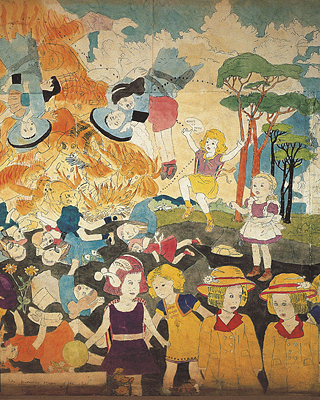
















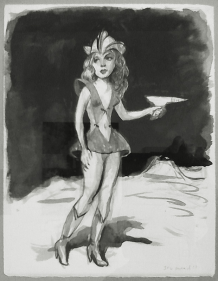




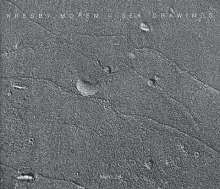

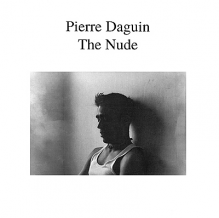
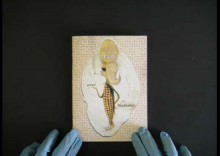


 New book by I.M.Jirous in English at our online bookshop.
New book by I.M.Jirous in English at our online bookshop.
Comentarios
Actualmente no hay comentariosAgregar nuevo comentario